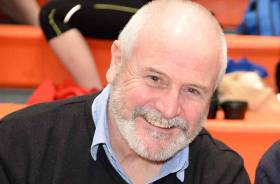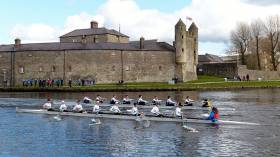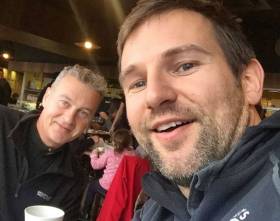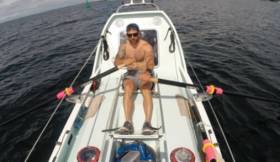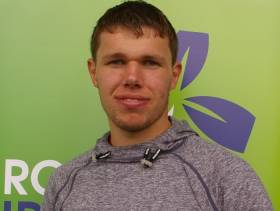Displaying items by tag: rowing
Colclough Elected President At Dramatic Rowing Ireland AGM
#Rowing: Eamonn Colclough (pronounced Coakley) was elected president of Rowing Ireland at the annual general meeting in Garda Boat Club in Dublin. The Tribesmen member, who is originally from Dublin, beat Kieran Kerr of St Michael’s by just one vote, 25-24. Colclough made a strong speech which was critical of Rowing Ireland’s failure to land a major sponsorship after the stellar year of 2016, when there were two Olympic finalists and one medal. He said that the sport needed to grow; to bring in new recreational members and to put behing it what he saw as over-reliance on the National Rowing Centre in Cork.
Mick O’Callaghan launched a forceful attack on the outgoing board. He said they had forced out Morten Espersen, who is stepping down from his role as High Performance Director. The outgoing president, Con Cronin, defended the board and said he had been transparent in his own dealings.
A Skibbereen motion to add under-21 events to the Irish Championships was defeated.
Gary O'Donovan Hits the Mark at Irish Trial
Top Irish internationals saw off challenges in the finals of the Irish Trials at the National Rowing Centre in Cork today. Gary O'Donovan trailed Sam McKeown after 1500 metres of the single sculls final, but the Rio medalist took the lead and won - despite the disadvantage of being a lightweight sculling into a bothersome headwind. Paul O'Donovan missed out through exam pressures.
Top heavyweight Sanita Puspure was a clear winner over Monika Dukarska in the women's single sculls final. Ireland lightweight international Denise Walsh bested outstanding 17-year-old heavyweight Hannah Scott in a fight for third.
Mark O'Donovan and Shane O'Driscoll had an easy victory in the men's pair. UCD's crew of Shane Mulvaney and David O'Malley had earlier pulled out due to Mulvaney falling ill.
The women's pair of Aifric Keogh and Aoife Feeley came out on top in their battle with under-23 crew Eimear Lambe and Ruth Gilligan.
McCarthy Tops Heat Rankings But UCD's Mulvaney Forced Out
Fintan McCarthy topped the single sculls rankings in the heats at the Ireland trial at the National Rowing Centre. The 20-year-old Skibbereen lightweight came in ahead of Daire Lynch and Gary O'Donovan. Jake McCarthy- Fintan's twin - was fourth. Sam McKeown and Chris Beck also made the A Final from the heats which were run on a time trial basis.
The men's pairs heats were overshadowed by an illness to Shane Mulvaney which forced his lightweight pair partnership with David O'Malley to pull out. Shane O'Driscoll and Mark O'Donovan won well.
Sanita Puspure was a clear winner in the women's singles heat, while UCC were the fastest women's pair.
60th Head of the River Brings More Than 600 Rowers to the Erne
The Erne Head of the River will welcome an exceptionally large entry of 91 boats and well over 600 rowers to Enniskillen on Saturday, March 4th. The race - the 60th - will be visible from the start point four miles downstream of Enniskillen Royal Grammar School (ERGS) Boat Club with the best views from the Killyhevlin Hotel, riverside in Cornagrade and the finish line at Portora boathouse itself.
Beginning at 1.15pm, each craft will start at a 30 second interval on a race to the finish line at Portora boathouse. Men, women's and junior teams of all ages and abilities will set off in turn in a race against the clock. The 90 boats will stream over the finish line from 1.45pm; for some, setting new records and for others getting to the finish line, the main achievement.
Twenty eight clubs are represented at the event from all over Ireland, including a new club based on the Erne. The Portora Boat Club has been created by old Portorans and parents of rowers from ERGS and other Fermanagh schools continuing the traditions of the old Portora Boat Club. It will challenge at the Head of the River for the first time in the men’s masters.
The event is an opportunity for clubs to gauge their progress during winter training against that of the competition. The number of entries is up 30 on last year reflecting a significant increase in rowing numbers in Northern Ireland and across Ireland.
Atlantic Rower Hennigan Sets Up Exciting Finish
#Rowing: After 5,000 kilometres of rowing, Gavan Hennigan is in a race to the line in the Talisker Whisky Atlantic Challenge. The three men of American Oarsmen are finishing fast, hoping to take third from the Irishman in the row from the Canary Islands to the West Indies. The American boat has been hitting remarkable numbers (93 nautical miles per day/172 km) but Hennigan retains a slight lead as the crews dash to the finish in English Harbour in Antigua. Both crews should finish late on Wednesday night or early on Thursday.
The race started on December 14th in the Canary Islands. Hennigan (35) is set for a new Irish record for a solo oarsman rowing across an ocean. The crew which won, Latitude 35, set a new world record. It had a four-man crew, as did the second boat to finish, Row for James.
Battling Hennigan Covers 150 Kilometres in One Day
#Rowing: Gavan Hennigan is producing extraordinary mileage in his battle to be the next boat to finish the Talisker Whisky Atlantic Challenge. The solo oarsman has held third since early in the 12-boat race from the Canary Islands to Antigua in the West Indies. The two leading craft, Latitude 35 and Row for James have finished and in the battle to be next boat to finish Hennigan has come under serious pressure from the three-man crew of American Oarsmen, which closed on him and looked set to pass him. In recent days, with a switch to more favourable winds, Hennigan has stretched his slight lead. He has been covering over 70 nautical miles (130 kilometres) per day. On Monday he covered 81 nm (150 km) to 78nm (144 km) for American Oarsmen.
Ireland Rowing HPD Espersen Resigns
#Rowing: The high performance director of Rowing Ireland, Morten Espersen, has resigned. Espersen emailed his decision to the chief executive of Rowing Ireland, Hamish Adams.
“On behalf of the entire Board and Staff I wish Morten well in the next phase of his professional and personal life and would like to personally thank him for his huge contribution to rowing in Ireland over the last four years,” Adams said.
“Morten will be working closely with us for the next three months to ensure our high performance programme continues to go from strength to strength.”
McKeown Crashes Through Six Minutes to Set New Irish Record
#Rowing: Paul O’Donovan set a new personal best – by just .1 of a second - and was the top lightweight at the Irish Indoor Rowing Championships today. The outstanding peformance of the day at the University of Limerick belonged, however, to heavyweight oarsman Sam McKeown. The Queen’s University oarsman was by far the fastest on the day, with a time of five minutes 55 seconds. This was the second occasion on which he had broken six minutes (he had covered the 2,000 metres in 5:59 in November) and he looked in control at the finish, shouting “Go Queen’s!”
Sanita Puspure was the fastest woman, clocking six minutes 40 seconds with a steady peformance. Her nearest rival was Monika Dukarska – 6:52.6 was a personal best for the Killorglin woman.
Ross Corrigan from Enniksillen Royal College (formerly Portora) was the fastest junior man – of 125 – and Hannah Scott of Bann took the honours amongst junior women.
In the under-23 men’s competition, another win for Daire Lynch confirmed his strong transition from junior ranks; UCD man Shane O’Connell, whose star has also been on the rise, won the under-23 lightweight grade in a good battle with Jake McCarthy and Fintan McCarthy.
Emily Hegarty of Skibbereen was the top woman at under-23 level. Her nearest rival was Eimear Lambe, who pipped her elder sister, Claire, by half a second. The Ireland Olympian who is now at Cambridge University competed as a heavyweight as she prepares for the Boat Race.
Competitors had to leave the venue late in the programme after a fire alarm. They were able to return to finish events.
Irish Indoor Rowing Championships, University of Limerick, Saturday (Selected Results):
Men – Open: 1 S McKeown 5 min 55.0 sec, 2 E O’Connor 6:02.7, 3 T Oliver 6:03.9. Lightweight Open: 1 P O’Donovan 6:07.4, 2 G O’Donovan 6:14.2, 3 M O’Donovan 6:19.0, 4 S O’Driscoll 6:21.1. Under-23: D Lynch 6:10.0. Lightweight Under-23: S O’Connell 6:21.3. Junior 18: R Corrigan 6:21.3. Jun 16: M Gallagher 6:38.6.
Women – Open: 1 S Puspure 6:40.0, 2 M Dukarska 6:52.6, 3 B Larsen 7:02.5, 4 C Lambe 7:11.4. Lwt: D Walsh 7:13.1. Under-23: E Hegarty 6:57.5; Lwt U-23: E McGiff 7:38.6. Jun 18: H Scott 7:05.7. Jun 16: Z McCutcheon 7:18.2.
Afloat Rowing Calendar 2017
#Rowing: Here is the 2017 Calendar for Irish Rowers. The year ahead is a bumper one. In February, the Fisa Extraordinary Congress in Tokyo will be the focus of intense interest, as a decision will be made on the boats which can compete at the Olympic Games. Lightweight athletes in Ireland and other countries will watch this closely. The international season will be a very long one as the World Championships will be held very late (September/October) in Florida in the United States. The domestic regatta season starts with Neptune Regatta on April 1st and the high point is the Irish Championships, which run from July 14th to July 16th. Queen’s University have decided to abandon plans to hold their regatta, which was scheduled for May 6th.
Our good wishes to all involved in rowing this year, whether behind the scenes or on the water.
Rowing Fixtures 2017
January
21st: Irish Indoor Rowing Championships, Limerick.
26th-28th: World Coaches Conference, Vancouver, Canada.
February
4th: European Indoor Rowing Championships, Paris.
9th-12th: Fisa Extraordinary Congress, Tokyo.
11th: Cork Head, Marina.
18th: Lagan Scullers’ Head, Belfast; New Ross Head, River Barrow.
18th-19th: Ireland high performance Assesment, Regional.
25th: St Michael’s Head, O’Brien’s Bridge, Clare.
March
4th: Erne Head, Enniskillen, Fermanagh. 11th: Women’s Eights’ Head of the River, London. 18th Galway Head; Lagan Head, Belfast.
25th: Dublin Head; Offaly Head, Tullamore.
25th: Head of the River, London.
25th-26th: Ireland high performance Assessment, National Rowing Centre (NRC), Cork.
26th: Rowing Ireland agm.
April
1st: Neptune Regatta, Islandbridge. 2nd: Commercial Regatta, Islandbridge. 2nd: The Boat Races, London.
7th: Irish University Championships, NRC.
8th-9th: Skibbereen Regatta, NRC.
15th: Trinity Regatta, Islandbridge, Dublin.
22nd: Limerick Regatta, O’Brien’s Bridge, Clare.
23rd: Irish Schools’ Regatta, O’Brien’s Bridge.
29th: Portadown Regatta.
29th (to May 1st): BUCS Regatta, Nottingham, England.
May
1st (from April 29th): BUCS Regatta, Nottingham, England. 5th-7th: World Cup Regatta, Belgrade, Serbia.
7th: Castleconnell Sprint Regatta.
13th: Lough Rynn Regatta, Leitrim.
13th-14th: Fisa Para Rowing Regatta, Gavirate, Italy.
20th: Lee Regatta, Marina, Cork.
20th-21st: European Junior Championships, Krefeld, Germany.
26th-28th: European Championships, Racice, Czech Republic.
26th-28th: British National Schools’ Regatta, Dorney Lake.
27th: Dublin Metropolitan Regatta, Blessington; Belfast Sprint Regatta.
June
3rd-4th: Carlow Regatta. 3rd-4th: (London) Metropolitan Regatta.
10th-11th: Ireland high performance Assessment, NRC.
15th-18th: World Cup Regatta, Poznan, Poland. 16th-18th: Henley Women’s Regatta. 17th: Athlone Regatta, Coosan Point. 17th: Marlow Regatta, Dorney Lake. 18th: Galway Regatta.
24th-25th: Cork Regatta, NRC.
28th (to July 2nd): Henley Royal Regatta.
July
1st-2nd (from June 28th): Henley Royal Regatta. 1st: Ulster Branch Regatta, Craigavon Lakes, 2nd: Fermoy Sprint Regatta.
7th-9th: World Cup Regatta, Lucerne, Switzerland.
14th-16th: Irish Rowing Championships, NRC.
19th-23rd: Under-23 World Championships, Plovdiv.
22nd: Home International Regatta, London Docklands, England.
29th -30th: Coupe de la Jeunesse, Hazewinkel, Belgium.
August
2nd-6th: World Junior Championships, Trakai, Lithuania. 6th: Carrick-on-Shannon Sprint Regatta.
18th-20th: Irish Coastal Rowing Championships, Ballyshannon, Co Donegal.
26th: Belfast Summer Sprint Regatta.
September
2nd-3rd: European Under-23 Championships, Kruszwica, Poland.
6th-1oth: World Masters, Bled, Slovenia. 16th: St Michael’s Masters Regatta, Limerick.
24th (to October 1st): World Championships, Sarasota-Bradenton, Florida.
October
1st (from September 24th): World Championships, Sarasota-Bradenton, Florida.
7th Tullamore Time Trial. 7th-8th: Ireland high performance Assessment, NRC.
13th-15th: World Coastal Rowing Championships, Thonon, France.
21st-22nd: Head of the Charles River, Boston.
28th: Castleconnell Head, Castleconnell.
November
4th: Neptune Head, Blessington.
11th: Bann Head, Coleraine. 12th: Fours Head, London.
18th: Skibbereen Head, NRC.
25th: Provinces Indoor Rowing Championships, Limerick.
December
2nd: Head of the Shannon, Carrick-on-Shannon; Muckross Head, NRC.
16th-17th: Ireland high performance Assessments, NRC.
Solo Rower Hennigan Showing the Way in Atlantic Race
#Rowing: A week into his Atlantic crossing, Gavan Hennigan continues to do exceptionally well. The Galway man is the fastest solo rower in the Talisker Whisky Atlantic Challenge from La Gomera to Antigua. More impressively, he is fourth overall of the 12 boats. Hennigan is farther into the race than a four, two trios and two pairs, as well as the other three solo rowers. At the head of the field, two fours are fighting it out: Latitude 35 from America and Row for James from Britain. Just ahead of Hennigan, whose team is called Soulo Gav, is the trio, American Oarsmen. Hennigan has been warned that there may be difficult weather ahead.


























